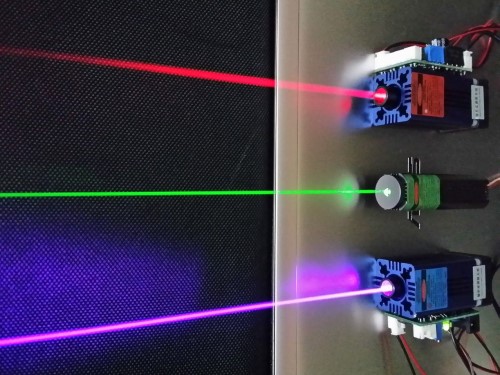How Does a Laser Module Work?
Laser modules are at the heart of modern technology, offering unparalleled precision and efficiency in various applications. At our store, we pride ourselves on offering the highest quality laser modules designed to meet the demands of diverse industries. In this blog post, we'll delve into the working principles of laser modules, highlighting why our products stand out in the market. Whether you're in the market for a new laser module for your project or simply curious about how these amazing devices work, read on to learn more.
The Core Components of a Laser Module
An ordinary laser module is a sophisticated assembly of components, each playing a vital role in its operation. The primary components include:
Laser Diode
The source of the laser light, the diode emits light when an electrical current is applied. When a current is applied to the laser diode, it stimulates the emission of photons, producing laser light through a process known as stimulated emission. This light is monochromatic, meaning it consists of a single wavelength, and coherent, allowing it to stay focused over long distances.
Optical Elements
Lenses and mirrors that direct and focus the laser beam. The emitted light passes through optical elements, which may include collimating lenses to make the light beam parallel and focusing lenses to concentrate the beam at a specific point. These elements ensure the laser beam is precisely directed for the intended application.
Drive Circuit
Supplies the necessary power to the laser diode. The drive circuit is responsible for providing a stable and controlled current to the laser diode. This is crucial for maintaining consistent laser output power and preventing damage to the diode.
Heat Sink
Dissipates heat generated during operation to maintain performance and longevity. Laser diodes generate heat during operation, which can affect performance and lifespan. The heat sink attached to the laser module absorbs and dissipates this heat, ensuring the module operates within safe temperature limits.

How Does a Laser Module Work?
In the working process of the laser module, the principles of laser emission, photoelectric conversion and modulation are utilized. The following are the specific processes:
The laser diode within the laser module is the key component responsible for generating the laser light. The working principle of the laser diode involves the injection of current into a semiconductor structure with energy bands, causing electrons to transition from a lower energy level to a higher one, releasing energy in the process and stimulating the production of light. After multiple reflections and amplifications, this light becomes a beam of high brightness, high monochromaticity, and high coherence.
The receiver within the laser module is the component that converts optical signals into electrical signals. The principle of photoelectric conversion relies on the photovoltaic effect of semiconductor materials. When illuminated by light, photons are absorbed by the semiconductor material, causing electrons to transition from the valence band to the conduction band, forming electron-hole pairs. This flow of electrons and holes constitutes a current, thereby converting the optical signal into an electrical signal output.
The modulator within the laser module typically utilizes the Mach-Zehnder interferometer structure. The working principle of the modulator is to alter the phase of the light based on the input of the driving signal, thereby changing the intensity of the light and achieving modulation of the optical signal. When the driving signal is 'On,' the modulator uses interference effects to change the phase difference of the photons to π, resulting in a higher light intensity when the signal reaches the receiver. Conversely, when the driving signal is 'Off,' the phase difference is changed to 0, leading to a reduction or complete elimination of the light intensity at the receiver.
In summary, the working principle of laser modules is to generate laser signals through the use of lasers, modulate the signals through modulators, and finally convert the optical signals into electrical signals for output through photoelectric converters. The combination of these principles makes the laser module play an important role in the field of communication and optoelectronics.
Why Choose ATO Laser Modules?
High Precision: Our laser modules are engineered for applications requiring the utmost accuracy, such as laser cutting, marking, and engraving.
Durable Construction: With robust mechanical designs and high-quality materials, our modules are built to last in demanding environments.
Wide Range of Specifications: We offer laser modules with various wavelengths, power outputs, and beam qualities to suit different industrial needs.
Competitive Pricing: Our commitment to providing the best value for money means you get top-tier performance without breaking the bank.

Enhance Your Project with Laser Modules
Whether you're involved in manufacturing, research, or any industry that benefits from laser technology, our laser modules are the perfect choice. From the intricate details of PCB drilling to the precision required in medical equipment, our modules deliver the reliability and performance you need.
Ready to experience the difference? Visit ATO online store today and explore our selection of laser modules. For more information on how our products can revolutionize your project, don't hesitate to contact us.

